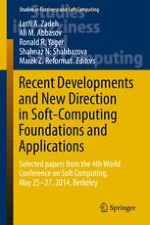2016 | OriginalPaper | Buchkapitel
Classification of Air Quality Monitoring Stations Using Fuzzy Similarity Measures: A Case Study
verfasst von : Kamal Jyoti Maji, Anil Kumar Dikshit, Ashok Deshpande
Erschienen in: Recent Developments and New Direction in Soft-Computing Foundations and Applications
Aktivieren Sie unsere intelligente Suche, um passende Fachinhalte oder Patente zu finden.
Wählen Sie Textabschnitte aus um mit Künstlicher Intelligenz passenden Patente zu finden. powered by
Markieren Sie Textabschnitte, um KI-gestützt weitere passende Inhalte zu finden. powered by
